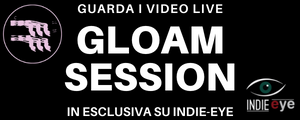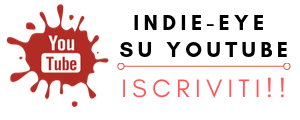Alla fine del 2003 la Sony BMG pubblicava un’edizione speciale di Reality, l’album di David Bowie uscito lo stesso anno. La Reality Tour Edition veniva limitata solamente alla distribuzione attraverso il tour promozionale per poi essere estesa alla vendita alle sole aree di Seattle e di Boston ed infine a tutti gli Stati Uniti alla fine del 2004. Il contenuto del DualDisc, un formato Ibrido sperimentato in quegli anni, oltre all’album di Bowie in versione 5.1, conteneva un film esclusivo di circa 30 minuti intitolato “Reality”, come l’album e inclusivo di alcune clip relative ai brani Never Get Old, The Loneliest Guy, Bring Me The Disco King and New Killer Star. Il progetto differiva completamente dai tradizionali EPK, configurandosi come una long-form del tutto diversa da quelle già sperimentate da Bowie nella sua carriera, tra cui il concept di Love You Till Tuesday ideato inizialmente per la ZDF e la clip estesa di Jazzin’ For Blue Jean diretta da Julien Temple.
Reality, il film viene affidato a Steven “Flip” Lippman, autore di talento stanziato a New York, che in quegli anni aveva già lavorato con il Kronos Quartet e con Laurie Anderson per “Life on a string”.
Chi ha avuto modo di vedere il film di Lippman, sostanzialmente inedito per il mercato italiano, conosce già l’impostazione concettuale del progetto, la cui origine deriva da una serie di domande poste a David Bowie, le cui risposte vengono messe in circolo attraverso un processo di decostruzione molto preciso e teso a creare un disorientamento di tipo percettivo.
Filmato in un teatro di posa ed in esterni, “Reality, il film” si dipana tra una “doppia” intervista e una relazione altrettanto palindroma tra luce ed oscurità.
Le suggestioni che il film innesca sono molteplici e ci consegnano una delle esperienze visive più potenti nella carriera di David Bowie, con una parte pre-conclusiva dedicata a Bring me the disco king, segmento che sembra elaborare un lungo percorso di relazione con i corpi e con la morte che Tanja Stark ha approfonditamente analizzato secondo i principi di nessi acausali della sincronicità, con suo saggio contenuto nel volume Enchanting David Bowie.
Visto adesso, il film di Steven Lippman, acquisisce un valore molto forte, proprio per questo preferiamo non svelarvi interamente il contenuto.
Gli interessi di Bowie per alcuni aspetti antropologici, spirituali e linguistici non così distanti da quelli per Derrida o altre forme di disseminazione che abbiamo analizzato con questo articolo, sembrano trovare un’interpretazione molto suggestiva attraverso la creatività di Steven Lippman, con un lavoro che è interamente ideato da lui e che ci ha ricordato moltissimo l’Inland Empire Lynchiano, ma realizzato tre anni prima.
Una delle risposte di Bowie nell’intervista creativa concertata da Lippman e che ci piace segnalare, si riferisce al romanzo di Peter Ackroyd intitolato Hawksmoor, titolo comparso anche nella lista dei cento libri preferiti dall’artista inglese pubblicata dalla stampa anglofona e che mette insieme storia e fantasia, basandosi sulle sei chiese commissionate all’architetto inglese Nicholas Hawksmoor e terminate nel 1733. Il fatto che la psicogeografia di queste chiese (a cui Ackroyd ne aggiunge una di fantasia) disegni una vera e propria “Blackstar” sulla mappa di Londra rientra in una suggestione possibile alla quale non vogliamo dare alcun significato esclusivo, proprio per la natura del tutto inclusiva del progetto sviluppato da Lippman
A questo proposito abbiamo rintracciato e contattato Steven Lippman per fargli alcune domande sulla lavorazione di Reality, il film e sul suo rapporto creativo con David Bowie. Ne è venuta fuori un’intervista ricchissima, che vi proponiamo in lingua italiana e in lingua inglese, per approfondire la genesi di questo importante capitolo nella carriera di David Bowie e per conoscere da vicino il metodo di un regista dal grande talento come Steven Lippman.
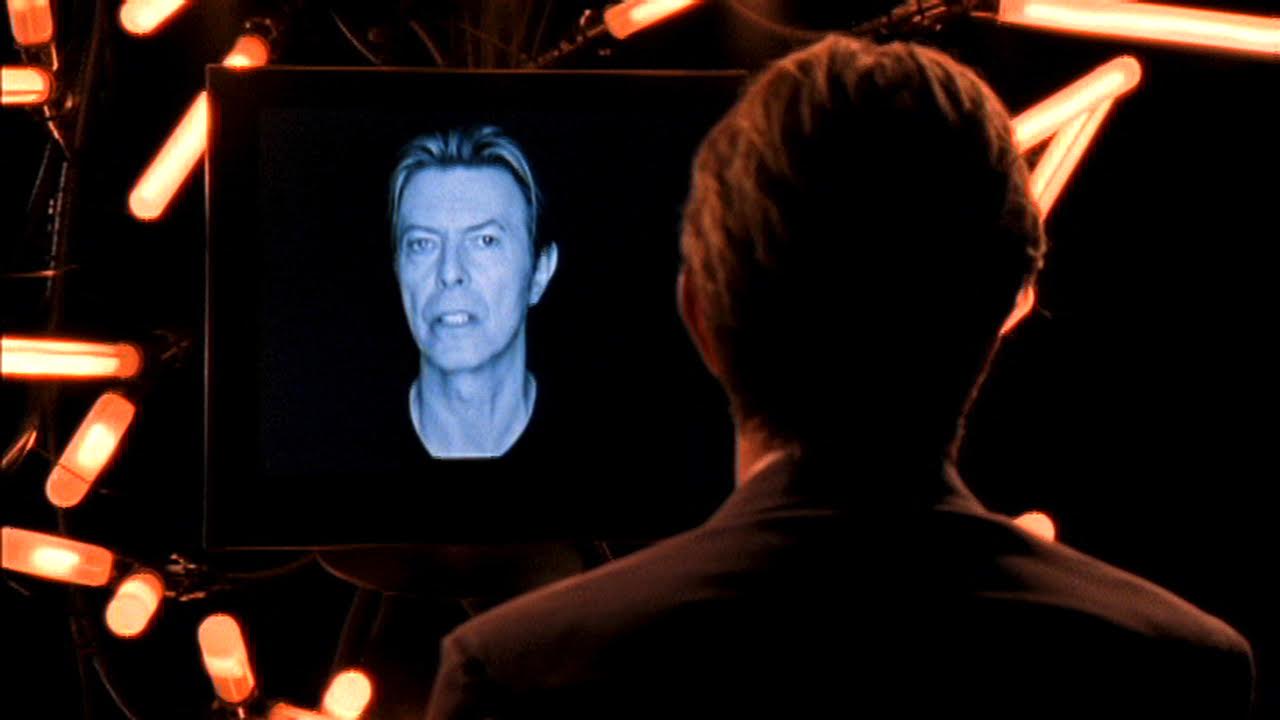
L’idea principale che sta alla base del film realizzato per Reality è molto differente da qualsiasi altro progetto promozionale. Prima di tutto non è un EPK tradizionale, ma si tratta di un concetto complessivo che interagisce con musica e immagini per costruire qualcosa di più stratificato. Come è nata l’idea, come ha cominciato a collaborare con David Bowie e come ha sviluppato questa idea con lui, prima ancora di cominciare a filmare?
Reality film non è un EPK e non è mai stato pensato come uno strumento promozionale. Tra l’altro, esiste una versione breve in forma EPK che è stata desunta dallo stesso materiale. Le risposte sono molto dirette e in un certo senso orientate alla promozione dell’album.
Il “Reality film” è stato creato in un certo modo perché mi é stata data l’opportunità di lavorare su materiale che potesse essere inserito in modo esclusivo nell’edizione DualDisc del CD di Bowie. “Reality” è stato uno dei primi DualDisc in assoluto, un formato introdotto proprio negli Stati Uniti. Nello specifico, per chi non avesse familiarità, era un formato che conteneva informazioni CD e DVD su un solo supporto. Il lato DVD poteva contenere solamente 40 minuti di materiale. In questo senso mi era stato chiesto di creare un contenuto di minimo 30 minuti, per sfruttarne al massimo le potenzialità. La richiesta iniziale era quindi generica, ma mi ha consentito di immaginarmi la cosa come se avessi una tela vuota su cui lavorare.
Il manager di Bowie era informato riguardo al lavoro che avevo fatto con Laurie Anderson (n.d.r il video di Life on a String) , per questo mi contattò per sapere se avevo qualcosa da far vedere a Bowie. In quel momento non sapevo quale sarebbe stata la strada da intraprendere né ero a conoscenza dei dettagli del progetto. Sapevo solo che Bowie stava per guardare il mio materiale, che era piuttosto soddisfacente. Quando ho appreso che avrebbe voluto lavorare con me, mi sembrava impossibile. Naturalmente ero molto eccitato all’idea.
L’idea per il film è mia, ma ispirata dai brani di Reality e dalla mia ammirazione di lungo corso per la sua musica. Bowie era e rimane uno dei miei grandi eroi culturali. Mi ha dato totale libertà nella scelta dei brani per creare il concept. Mi sono incontrato con lui alcune volte dopo la fine della lavorazione di Reality, l’album, ma in generale si è trattato di incontri per ascoltare la musica e per conoscerci meglio. Non abbiamo mai discusso il significato delle canzoni.
Ho scritto il film in forma di prosa. Circa due o tre pagine in tutto. Non era una vera e propria sceneggiatura, ma una linea appena tematica e descrittiva. Bowie l’ha letta e mi ha incoraggiato molto, apprezzando il lavoro. Abbiamo cambiato solamente due cose prima di girare, ed erano del tutto minori. Per esser chiari, sono sicuro che se non avesse apprezzato quello che avevo scritto, sarei certamente venuto a saperlo. Nel suo approccio non c’era mai niente di passivo. Era sempre molto coinvolto ed eccitato su tutte le possibilità creative. Dal momento che ha apprezzato quello che gli proponevo, voleva solamente incoraggiare il processo.
Per “Reality Film” sono stati scelti formati differenti. È un mix tra digitale e pellicola? La grana di alcune immagini sembra suggerire l’utilizzo del 16mm o dell’8mm. Come mai questa scelta, e può raccontarci il processo di realizzazione anche in questo senso?
Il 35mm è stato utilizzato solamente per le sequenze girate nella foresta (n.d.r. il segmento che riguarda “Bring me the disco king”) Abbiamo recuperato una vecchia Mitchell a manovella, come quelle utilizzate durante il periodo del muto. Questo ci ha consentito di ottenere una velocità irregolare e un’apertura variabile, che si può vedere nelle immagini.
L’intervista e “Never Get Old”, oltre a “The Loneliest Guy” e parte di “Bring me the Disco King” sono stati girati in Super 16mm, anche se ci sono alcuni inserti in Super 8 durante l’intervista. Stessa cosa per quanto riguarda gli alberi e le immagini di New York quando attacca “New Killer Star”. L’immagine che riproduce il volto di Bowie dal monitor televisivo è stata invece girata in Mini-DV e montata lo stesso giorno delle riprese sul set. In questo modo l’abbiamo riprodotta attraverso il monitor, ri-fotografandola in Super 16mm. Devo sottolineare che l’intero film è stato girato in due giorni complessivi. Gli interni il primo giorno, mentre le immagini della foresta e quelle urbane, il secondo giorno.
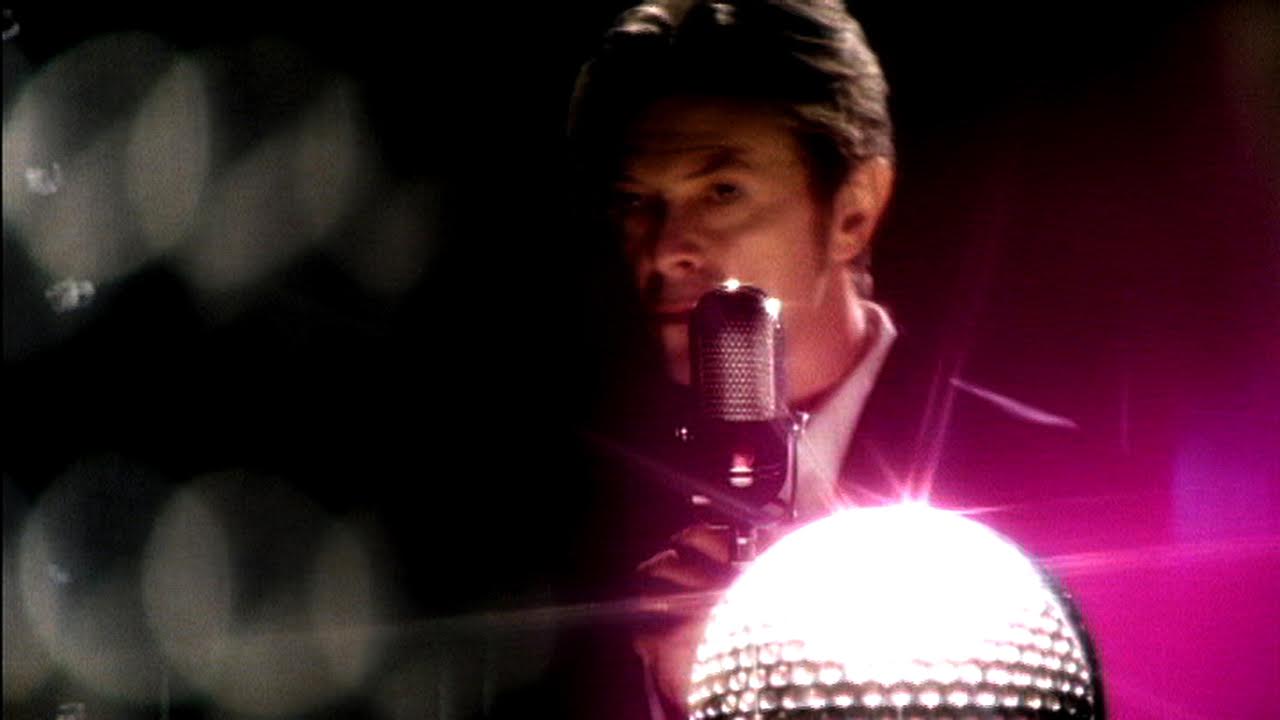
Nel film, la luce e l’oscurità hanno un ruolo importante. In particolare lo sguardo del pubblico viene condotto fuori dalla fruizione consueta di una performance, mentre la luce rivela solamente alcuni dettagli. David Bowie è fuori fuoco nella prima canzone; è nell’oscurità nella seconda e si copre il volto dalla fonte luminosa, mentre nel terzo entra in un mondo “altro” ed esterno, diverso dalla realtà performativa. Alla fine, quando sentiamo “New Killer Star”, ci vengono mostrati solamente alcuni alberi e un paesaggio urbano. Questo distacco progressivo da diversi livelli di realtà è peculiare nella ricerca di David Bowie, sia sulle immagini che sul linguaggio. Come ha discusso gli aspetti narrativi e come ha interagico con lui nel processo creativo? C’era una sceneggiatura, uno storyboard, alcuni disegni. Bowie ha in qualche modo condiviso alcuni aspetti concettuali con lei?
Eravamo d’accordo su un punto: non doveva esserci alcun storyboard. È il modo in cui preferisco lavorare. Ho un approccio molto specifico con l’illuminazione, e tutti gli aspetti di pre-produzione, incluso le location, ma preferisco lasciare le cose aperte per scoprire aspetti dell’immagine che non avrei mai potuto programmare.
Riguardo la progressione dei temi, ci fu uno sforzo cosciente in fase di montaggio, affinché si potesse creare l’idea di Bowie in un mondo chiuso che diventa sempre più frammentato e caotico per poi arrivare nella foresta esterna, prima che scompaia dal film, almeno in termini visivi. Molte cose sono emerse proprio in fase di montaggio, certi motivi, ma ho cercato di essere fedele al concetto e ai temi iniziali.
Riguardo alla sequenza in cui Bowie si nasconde dalla luce, si tratta di un tema sviluppato sul set per errore mentre stavamo girando “The Loneliest Guy”, ma sviluppa l’idea della luce per un interrogatorio. Ho pensato a come ci si può sentire quando si viene colpiti dai flash dei paparazzi, oppure ad un sospettato che viene interrogato in una stazione di polizia davanti ad una luce incandescente, oppure un criminale braccato dai riflettori di un elicottero, o forse, come quelle emesse dagli stessi in una missione di soccorso. Le associazioni sono moltissime, e tutte quante applicabili. Questa cosa è visibile per la prima volta in “The Loneliest Guy” e poi nella sequenza dove i rami della foresta sono bianchi (n.d.r. perché illuminati da un fascio di luce che attraversa misteriosamente la foresta dove Bowie si trova) per emergere infine oltraggiosamente con “Bring Me the Disco King”.
L’idea del film, o comunque la prima fonte di ispirazione, viene da un mio pensiero su cosa possa significare essere David Bowie e avere tutte quelle numerose identità pubbliche, e come lo stesso pubblico guarda le celebrità per ottenere delle risposte. Ho pensato a questo prima di ascoltare la musica di “Reality”. Non voglio applicare un senso ulteriore al film, perché credo che lo spettatore possa trovarci molte cose differenti, tutte quante generalmente valide. Questo è per me il punto fondamentale. Per esempio, ho sempre pensato che il film fosse divertente in modo oscuro, mentre altri lo trovano spaventoso e disturbante.
Ecco, l’idea dell’intervista per esempio, mi è sembrata molto forte, è una traccia del riflesso e del distacco da due immagini mediate, su livelli differenti. Il Bowie che si vede attraverso il monitor, e il Bowie intervistato. E la posizione dell’intervistatore e dell’intervistato sembra capovolta. Può raccontarci qualcosa su questo e sull’idea delle voci sovrimpresse, che a un certo punto confondono e rendono ardua la comprensione delle parole?
L’intenzione era quella di decostruire una conversazione avuta con David Bowie e basata su domande che spaziavano da argomenti di un certo spessore ad altri più assurdi, senza fare alcuna distinzione tra essi. Alcune di queste domande erano “I palazzi e le costruzioni hanno una personalità?” “Credi nel soprannaturale?” ma anche “Ketchup o mostarda?”. Il fine ultimo era di non ottenere, deliberatamente, alcun senso e di connettere le risposte alle domande sbagliate. Confonde e sconvolge e in qualche modo ne vuoi uscire. In questo senso Bowie nel film fugge da se stesso. La post produzione sonora 5.1 è davvero pazzesca ed è stata curata da Hector Castillo a partire dal sound design creato da Mary Ellen Porto e si può sentire correttamente solo sul DualDisc. È un lavoro che evidenzia, tra le altre cose, la lotta di potere tra il Bowie intervistato e quello sullo schermo televisivo. C’è proprio una battaglia per ottenere una posizione ingaggiata davanti ai canali audio. Vince il Bowie nel monitor. C’è un frammento, proprio alla fine della sequenza, dove puoi sentire il Bowie nel monitor mentre dice “questo è terribilmente triste”
Può sembrare insensibile, ma penso che sia sempre ridicolo guardare alle celebrità per cercare risposte profonde sulla vita. Questo non significa che non abbiano qualcosa di valido da aggiungere su questioni di interesse collettivo, oppure che i migliori non possano essere fonte di ispirazione attraverso il loro talento, sto solo dicendo che la loro fama non assegna a quelle idee un valore ulteriore. Credo che il concetto del film possa essere percepito diversamente oggi nell’era di Twitter, ma forse presagisce tutto il rumore odierno intorno ai social media.
Come avevo detto prima, ho filmato mentre facevo delle domande a David Bowie, inquadrato come una “testa parlante”, e poi montato come un loop connesso al monitor televisivo. Quando abbiamo filmato la conversazione attraverso il 16mm, gli ho posto le stesse domande e Bowie ha semplicemente improvvisato le risposte. Durante il montaggio, appariva come se stesse ponendo quelle domande a se stesso, ma ero io a fargliele sul set.
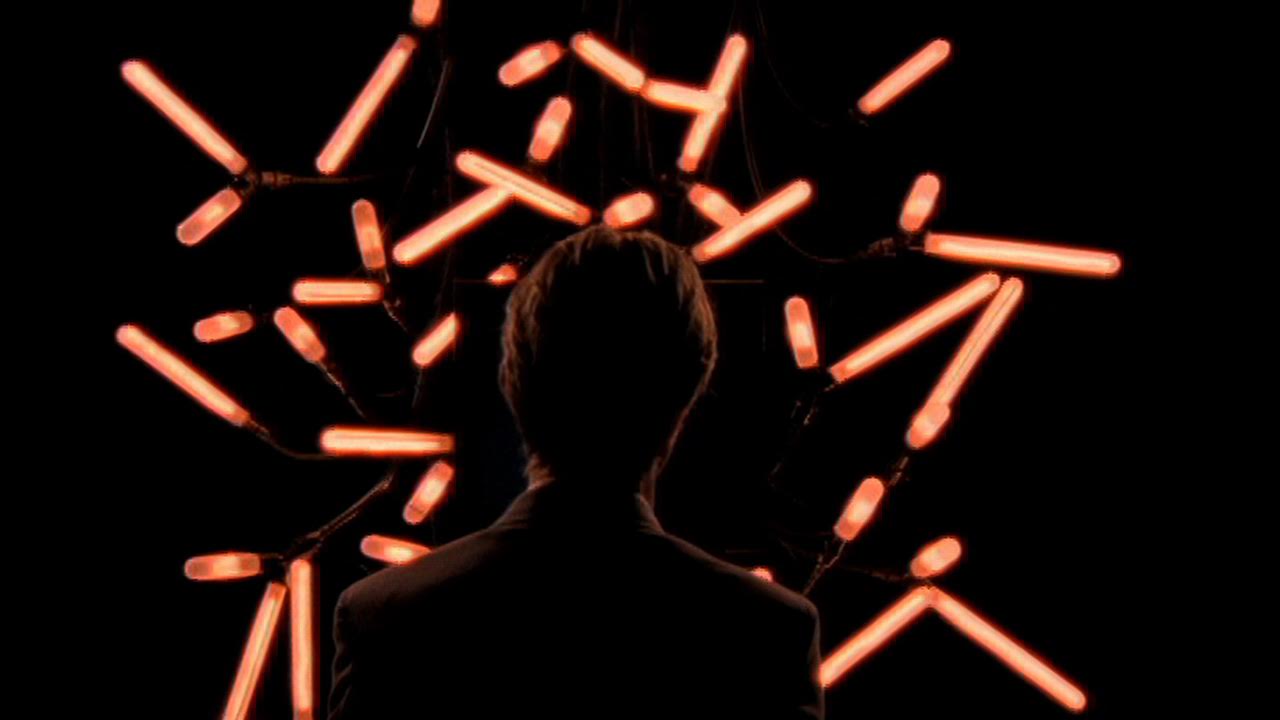
La mirrorball è un oggetto centrale. Ricorda naturalmente l’era Disco ma sembra anche un dispositivo che ci porta in un’altra dimensione. Fa pensare alle luci nel teatro di Inland Empire (realizzato qualche anno dopo) ma in un modo rovesciato, perché durante “Bring me the disco king” la mirrorball è l’unico oggetto artificiale in un set naturale. Un’idea molto bella. La domanda è: perché la mirrorball? Può raccontarci qualcosa sulla sua genesi? Con Bowie avete condiviso alcune idee su arte, cinema o altri riferimenti?
L’idea è semplice come l’indicazione che arriva dalla parola “Disco”. La mirrorball ha anche una qualità da sala da ballo che si connette con il segmento di “The Loneliest Guy”, che ho immaginato come una torch song moderna, come quelle che Billie Holiday e Frank Sinatra avrebbero cantato in un periodo differente.
Quando ho cominciato a pensare al film, ho avuto questa visione di Bowie in una foresta. Non cera nessun altro contesto tranne il fatto di averlo sempre visto in setting molto stilizzati o artificiali e che sarebbe stato interessante vederlo in un ambiente naturale. Poi ho ascoltato “Bring me the Disco King” e ho pensato: come sarebbe se mettessimo una mirrorball al centro di una foresta, trasformando la natura in un palcoscenico? Davvero, è stato un pensiero istintivo. La mirrorball ha una qualità misteriosa e minacciosa nella sequenza di “Disco King”. Durante il montaggio, la immaginavo, scherzosamente, come il monolite di 2001. Ma non era l’intenzione quando ho filmato. Le persone mi chiedono “che cosa significa” e la risposta è: “ha davvero importanza?”
La traccia scritta ha molti riferimenti con differenti filmakers, evoca stili e atmosfera, ma in via definitiva era solo un modo di comunicare le idee iniziali a Bowie così che potesse sentirle risuonare, senza che fossero semplici parole. Era molto colto dal punto di vista cinematografico, quindi era un buon modo per procedere con le idee. In altro modo, credo a livello subcosciente, non c’erano riferimenti diretti ad altri film quando abbiamo cominciato a girare. I rami bianchi provengono da “Dracula: Pages From a Virgin’s Diary” di Guy Maddin, che avevo visto di recente in quel periodo, ma non c’era niente di specifico tranne l’idea di partire da qualcosa di semplice e rappresentativo come rami bianchi ed evocare qualcosa di più esteso con l’illuminazione, il Super 8mm e David Bowie.
Dove avete girato? Vediamo palazzi, la sezione in studio, e c’è una foresta. Può dirci qulcosa sulle location?
Abbiamo girato tutt’intorno New York. La foresta e gli alberi erano intorno ad un fiume nel New Jersey, 45 minuti di guida. Non ricordo il nome esatto del posto. Tuttavia, la parte in interni e tutte le immagini esterne intorno, riguardano Manhattan. Anche l’immagine in cui Bowie si confonde tra i rami bianchi è stata girata in un teatro di posa.
“Bring me the disco king” sembra una sorta di uscita dalla realtà del palco, anche se questo nei segmenti precedenti non è così chiaro come luogo performativo ed è piuttosto stilizzato. La foresta sembra rappresentare una realtà differente e si apre alla rappresentazione molto esplicita di un doppio, come se fosse la separazione tra Bowie e il suo personaggio. In un certo senso, e soprattutto in questi giorni, è un’immagine commovente e molto potente, anche per le parole pronunciate da David Bowie verso la fine del segmento: “Questo è il suono della morte, questo è il suono che si può sentire quando sei morto: porte che si aprono”. Da dove arriva tutto questo? E in termini strettamente tecnici, sembra che si sia usato lo stop-motion. Come mai questa scelta?
La tecnica consiste nella velocità variabile e l’apertura della cinepresa 35mm a manovella. Si è poi girato simultaneamente con un’immagine più chiara in 16mm, per poi tagliare avanti e indietro tra i due diversi tipi di immagine con facilità.
Il doppio era un’estensione dello sdoppiamento di Bowie che intervista se stesso. È difficile applicare un significato ulteriore alla rappresentazione della morte all’interno della foresta, soprattutto adesso. La cosa migliore da dire, per quanto mi riguarda è che il tutto è stato ideato nel 2003 e che qualsiasi analogia può essere adesso compresa solamente nell’ordine delle coincidenze.
Il dialogo sulla morte viene dalle reazioni di Bowie ai rumori che provenivano dallo studio tutte le volte che gli chiedevo del soprannaturale. E abbiamo riso molto sull’assurdità di questo sincronismo. Quando il rumore cigolante di un porta nello studio, aperta senza una ragione precisa, ha interrotto le riprese, Bowie ha pronunciato quella frase sul suono della morte, in modo totalmente scherzoso. L’ho usata nel montaggio, applicandola ad un contesto differente. In quei giorni l’approccio era quello dell’umorismo nero. E penso ancora che sia così, anche se capisco perfettamente che in questo momento per alcune persone assuma un diverso significato. Non ne sono affatto immune.
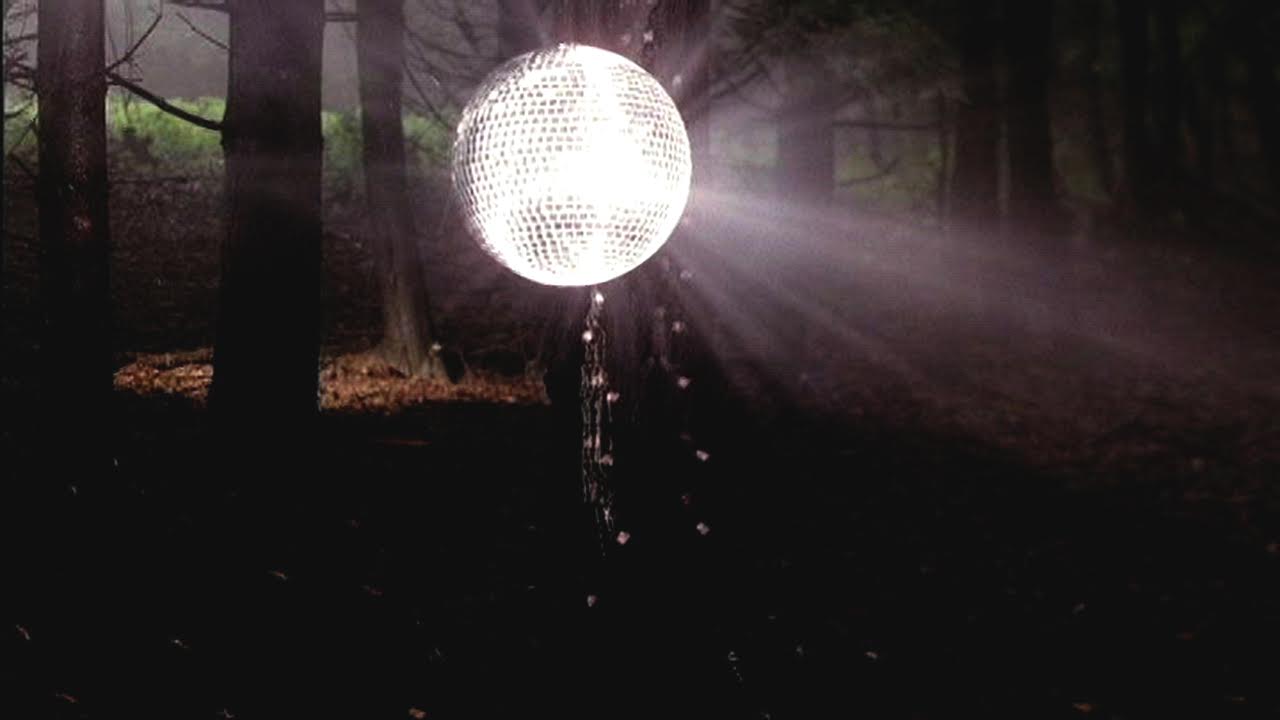
Che tipo di illuminazioni e sorgenti luminose avete usato durante le riprese di “Bring me the disco king”?
Abbiamo girato principalmente con luci naturali, ad eccezione di una sola, potentissima, sorgente chiamata Xenon che rifletteva direttamente sulla mirrorball. Quel giorno c’era una leggera pioggia e anche una foschia nebbiosa che tagliava l’aria sotto la copertura degli alberi. I riflessi che provenivano dalla mirrorball si rovesciavano quindi sui rami creando quello che sembrava come sangue bianco attraverso un sistema venoso. Abbiamo scoperto questo effetto sperimentando al volo e sul posto. Non c’era niente di preparato in questo senso. Il primo obiettivo era quello di ottenere un riflesso di luce sulla mirrorball appesa nella foresta e guardare cosa sarebbe accaduto. Fortunatamente il risultato era più di quello che ci aspettavamo. Lo stesso con il fascio di luce che attraversa la foresta. Con il mio direttore della fotografia, Teodoro Maniaci, abbiamo visto l’effetto spettacolare che generava casualmente puntando dritto tra gli alberi. Per questo abbiamo sistemato un tratto di binario lungo otto piedi in modo da muovere i bracci con la luce issata, avanti e indietro, mentre ci muovevamo sempre avanti e indietro, sui binari.
Per ogni ripresa avremmo potuto cambiare angolatura per offrire una prospettiva differente, ma in realtà erano solamente gli stessi otto piedi che attraversavano gli alberi in modo ripetuto. Abbiamo girato usando sia il 16mm che la macchina a manovella a 35mm.
Tutto quello che vedi è stato fatto in fase di ripresa oppure sovrapponendo durante il montaggio, come in “Never get Old” oppure nello split screen chiuso nella foresta dove vedi i due Bowie insieme. Il solo effetto generato in post-produzione si riferiva alla rimozione della corda appesa ad un ramo d’albero e che teneva la mirrorball sospesa.
Alla fine di “Bring me the disco King”, prima che parta “New Killer Star”, vediamo alcuni frammenti riassuntivi dai precedenti segmenti, come un Deja-vu? È corretto?
Si. Vengono nuovamente tracciati all’indietro gli elementi dai quali siamo partiti nella preparazione dell’intervista. Credo che sia molto meno legato al Deja-vu e più vicino ad un momentaneo ritorno alla normalità.
All’inizio del film, David Bowie parla di un romanzo scritto da Peter Ackroyd e intitolato “Hawksmoor”. Avete parlato insieme di quel testo, ed era in qualche modo legato alla relazione tra luce e oscurità che attraversa tutto il film?
Non ha un significato specifico. L’intervista è stata completamente improvvisata, e si è basata su quelle domande di cui ti dicevo prima. Bowie non ha né preparato, ne sceneggiato le domande prima. Ho inserito quel riferimento all’inizio semplicemente perché offre un senso di formalità e convince lo spettatore che si tratti di un’intervista convenzionale. Velocemente questa sensazione precipita e viene vanificata.
Il film è per me un importante “oggetto” d’arte. Stabilisce un dialogo con l’album di David Bowie, ma allo stesso tempo funziona in modo autonomo. Perché avete scelto di farne un oggetto esclusivo, pubblicandolo all’interno del solo DualDisc destinato al mercato statunitense?
Il fatto fosse esclusivo era una scelta dettata da necessità di mercato. La compagnia discografica stava cercando di creare una certa aspettativa sul formato, per questo l’idea era quella di offrire un incentivo alle persone per giustificarne l’acquisto. Il film non si può vedere altrove. Ed è bene ricordare che tutto questo è accaduto prima dell’esplosione di Youtube e dei video in streaming.
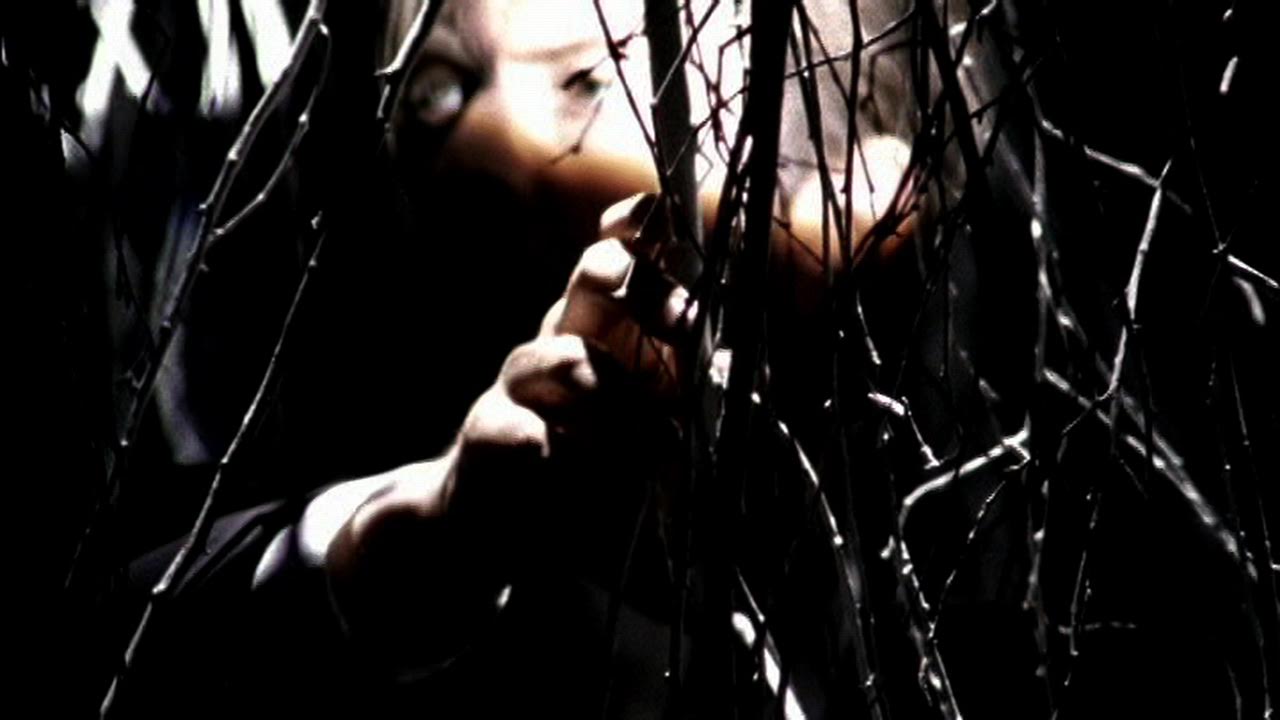
Il film è stato incluso anche nella programmazione del Woodstock Film Festival. Come fu accolto? Può raccontarci qualcosa?
Quello di essere invitati ad un festival con il proprio lavoro è sempre un onore e la reazione è stata molto positiva, ma questo è accaduto quasi due anni dopo l’uscita del DualDisc. E non ci fu una grande promozione intorno alla proiezione. Durante gli anni è stato proiettato pochissime volte, e principalmente in connessione con altri lavori che ho fatto. È stato mostrato nel 2013 come parte delle rassegne intitolate “Bowie on Film” che la Film Society del Lincoln Center ha proposto a NYC. C’era molto materiale in quelle occasioni ed è stato molto eccitante farne parte. Così come è stato eccitante veder proiettato il mio lavoro su un grande schermo, esperienza che ho raramente avuto il privilegio di provare.
Non vorrei chiederle un’interpretazione profonda del film; naturalmente se volesse condividerla ne saremmo lieti, ma credo che come in molti lavori dove David Bowie è coinvolto, il significato possa essere aperto e si diriga in mille direzioni. Che ne pensa?
Direi che hai già risposto alla domanda
Ultima Domanda. Ha un ricordo personale su David Bowie da condividere, per quanto riguarda la relazione lavorativa con lui durante la realizzazione del Reality Film?
Oltre al suo talento, posso dire che era molto divertente, gentile e intelligente oltre ogni limite. Il suo potere come star, durante le riprese era davvero un campo di forza. Era necessario indietreggiare, perché l’energia era davvero molto forte. Ma tra le riprese, era semplicemente un uomo accessibile e molto caloroso. Per esempio, conosceva i nomi di tutti quanti sul set, e faceva sentire tutti molto importanti per il loro ruolo. Non c’è mai stato un momento in cui non fosse eccitato da quello che stavamo creando. Si è fidato di me e di tutti i miei collaboratori in modo incondizionato. Anche quando stavamo montando, ha solo voluto vedere il film quando eravamo pronti a mostrarglielo. Dopo averglielo mostrato per la prima volta, non ha mai chiesto alcun cambiamento. Il film che è possibile guardare oggi è la prima e l’unica versione definitiva.
Steven Lippman – Biografia
Steven Lippman è un regista di film, videoclip e documentari. Ha lavorato per David Bowie, Laurie Anderson, Rosanne Cash, Joe Henry, Dolly Parton, Jorge Drexler, Carly Simon, Rumer, Trixie Whitley, Esperanza Spalding, Bonnie Raitt, Madeleine Peyroux, Bette Midler, Kronos Quartet, Youssou N’Dour e molti altri.
I suoi lavori sono stati presentati nel contesto di svariati festival di cinema, tra cui Cannes, Londra, Berlino, San Paolo, Nashville, Tribeca, Denver e molti altri.
Gli sono state dedicate retrospettive specifiche al Music Doc Fest di Malmo in Svezia, al Sound Unseen Film Festival di Minneapolis a all’IN-Edit di Barcellona.
Immagini e contributi visuali dei suoi film sono stati mostrati nei concerti di David Bowie, Rosanne Cash e Dolly Parton.
Lippman ha diretto anche un documentario sulla lunga distanza intitolato Behind the Lid, performance immersiva basata sulla sperimentazione performativa di Lee Nagrin e su quella del maestro di pupazzi Basil Twist. Il film è stato presentato al BAM come parte della serie “Puppets on Film” della BAM/Henson Foundation.
Lippman sta al momento lavorando ad un nuovo documentario intitolato Stay All Night. Una meditazione abbagliante sulla relazione tra Judy Garland e il suo pubblico, sulla natura della memoria e sulla città di New York in un’era di cambiamento sociale osservata attraverso la soggettiva prismatica del leggendario concerto della Garland al Carnegie Hall, che ebbe luogo il 23 aprile del 1961.
Lippman vive a Brookyn, New York, e lavora in tutto il mondo.
Per una selezione delle sue opere, Steven Lippman, profilo vimeo ufficiale
Guarda Reality, il film, sul profilo vimeo di Steven Lippman
——————————
Steven Lippman – Interview – English Version
The first question is about the main idea behind “Reality” film. It’s very different from other promotional projects. It’s not a traditional EPK, but a whole concept that interacts with songs and images to create another meaning. How was the idea born, how did you come to work with Bowie, and did you develop the concept with him?
The film is not an EPK at all, and was never intended as a promotional tool. In fact, there is a separate short EPK that was created from the same material. The answers there are straight-forward and geared towards the promotion of the album.
The “Reality” film was created because I was given the task of creating material that would be exclusive to the DualDisc edition. “Reality” was one of the first DualDiscs available. The format was only introduced in the U.S. In case people are unfamiliar, this was a format that had CD and DVD on the same disc. The DVD side could only contain up to 40 minutes of video. I was told I had to create content that would be a minimum of 30 minutes to have value. So the initial request was very generic. But it also allowed me to look at it like a blank canvas.
Bowie’s manager was aware of a film I had done with Laurie Anderson, so he contacted me asking me if I had anything to send over for Bowie to look at. At that time, I had no idea what the mission was or any details about the project. I just knew that Bowie was going to look at my work, which was satisfying enough. Once I heard that he wanted to work with me, it seemed unreal. And of course, very exciting.
The idea for the film came from me, but inspired by the new music and years of admiring Bowie. He was and remains one of my great cultural heroes. He gave me total freedom to choose the songs and create the concept. I met with Bowie a few times while he was finishing the album, but it was generally just to listen to the new music and to get to know one another. We never discussed the meanings of the songs.
I wrote the film in prose form. Maybe 2 or 3 pages total. It wasn’t a script, but just thematic and descriptive outline. He read it and gave me very supportive praise. There was only two things we changed before shooting and they were minor. To be clear, I’m sure if he didn’t like what I wrote, then I would have known about it. There was nothing lazy in his approach. He was always engaged and excited about all creative possibilities. Since he liked what I was offering, he only wanted to encourage and support the process.
There seems to be different formats used to create the piece; is it a mix between digital and film? The grain of some images looks like 16mm or 8mm film. Can you tell us what formats you used, and why, and in which particular images?
The 35mm is only used for some shots in the forest sequence. We ran it through an old Mitchell hand-cranked camera, like ones used during the silent movie era. This created an irregular speed and fluctuating aperture, which you can see in the imagery.
The interview and “Never Get Old,” “The Loneliest Guy” and parts of the “Bring Me The Disco King” sequences are shot in Super 16mm, though there are some Super 8mm inserts in the interview. The sequences with Bowie in the white branches leading into “Disco King” is all Super 8mm. Same with the trees and all the New York City imagery in “New Killer Star.” The image on the TV screen was shot in Mini-DV, shot and edited that same day on set. We then fed it through the monitor, re-photographing it in Super 16mm.
I should note that we shot the entire film in 2 days. The interiors were Day 1, and the forest and city imagery was Day 2.
Light and darkness play an important role in the film. David Bowie is blurred or out of focus in the first song; he is in darkness in the second and he covers his face from light, and in the third he enters an exterior world, different from stage-reality; while “New Killer Star” shows us only trees and cityscapes. This progressive detachment from different levels of reality is different from images and language associated with David Bowie. Did you discuss the narrative with David Bowie? And how did you interact with Bowie in the creative process? Was there a screenplay, storyboard, drawnings? Did he share some conceptual ideas with you?
We both agreed there would be no storyboards. That is just my preference for how I work. I am very specific about the lighting, production design and locations when preparing, but prefer to leave things open for discovering images you could never plan.
As far as the progressive themes, there was a conscious effort in the edit to create a sense of Bowie in an interior world which becomes more and more fragmented and chaotic, then progresses into the exterior forest before he disappears from the film altogether, at least visually. A lot emerged in the edit, certain motifs, but it stayed true to the initial concept and themes.
Regarding Bowie shielding himself from the light, this was a motif that developed on-set by accident when shooting “Loneliest Guy,” but it sparked the idea of an interrogating light. I thought of what it feels like to be swarmed by paparazzi light bulbs, or a suspect being questioned at the police station under a hot light, or a criminal being hunted down by the searching lights of a helicopter, or perhaps, a rescue mission. There’s a lot of associations, all of which can be applicable. It appears first in “The Loneliest Guy,” and then in the white branches sequence, and then outrageously takes over in the “Disco King”
The idea of the film, or at least how it started, came from me thinking about what it must be like to be David Bowie, and have all these different public identities, and how the public looks to celebrities for answers. I thought of this before I heard any of the “Reality” music. I don’t want to apply further meaning to the film because I do believe that viewers can find different things in it, all of which are generally valid. This is, for me, also part of the point of the film. For instance, I’ve always thought the film was darkly funny, while others find it scary and disturbing.
The interview idea is really mindblowing, with its reflection and detachment from two mediated images on different levels: the televised Bowie and the real Bowie. The position of interviewer and interviewed seems reversed. Can you tell us something about this idea and the superimposed voices that. at a certain point, blur the meaning and comprehension of the words?
The intention was to deconstruct a conversation with Bowie based on questions that ranged from the profound to the absurd and make no distinction between them. Some of the questions were “Do buildings have personalities?’ “Do you believe in the supernatural?” and “Ketchup or mustard?” The ultimate goal was to have it all deliberately make no sense; to have answers connected to the wrong questions. It starts to be so confusing and overwhelming that you just want to escape. In this case, Bowie escaping from himself. There’s a really mind-blowing 5.1. mix by Hector Castillo from Mary Ellen Porto’s sound design heard only on the DualDisc. It emphasizes, among other elements, the power struggle between the interview Bowie and the TV monitor Bowie. There’s a fight for placement in the front speaker channels. TV monitor Bowie wins. There’s a fragment just at the end of the sequence when you hear TV monitor Bowie say “That’s so terribly sad.”
It may sound callous, but I always think it’s ridiculous that we look to celebrities for the answer to life’s deeper meanings. It’s not to say that some don’t have worthy things to add to the public dialogue, or the best of them don’t inspire through their talent, but just because they are famous doesn’t, in my mind, give them any extra validity. I imagine the film’s concept might have been very different in today’s age of Twitter, but perhaps it foreshadows all that social media noise.
As mentioned earlier, I filmed him asking the questions, framed as a talking head, and then edited that as a loop and we fed it onto the monitor. When we filmed the conversation in the main 16mm frame, I asked him the same questions and he just improvised answers. When we edited, it sounds like he’s asking himself questions. On-set, I was asking the questions.
The Mirrorball is a central object. It references the Disco era of course, but it also seems a device that bring us in another dimension. It reminds me of the theatre lights in David Lynch’s “Inland Empire,” but in a reversed way, because during “Bring Me the Disco King” the mirrorball is the only artificial object in a natural setting. This is a really great idea!! The question is: why the mirroball? Can you tell us something about this idea and how you came up with it?
The idea was as simple as its the ultimate evocation of the word “disco.” The mirroball also has a theatrical dancehall quality that fit “The Loneliest Guy” sequence, which I thought of as a modern torch song, the kind Billie Holiday or Frank Sinatra might have sung in another time.
When I first started thinking of the film, I had this vision of Bowie in a forest. There was no other context other than thinking I’d always seen him in very stylized artificial settings, and that it would be interesting to see him somewhere natural. Then I heard “Bring Me The Disco King” and thought, what would happen if we put a mirrorball in the middle of a forest, turning nature into a stage? Really, it was just an instinctive thought. The mirrorball does have an eerie and menacing quality in the “Disco King” sequence. During the edit, I kept thinking of it, jokingly, like the monolith in “2001.” But that wasn’t the intention when I filmed it. People will ask “what does it mean” and the answer becomes “does it really matter?”
The written outline had references to different filmmakers, to evoke style and mood, but ultimately it was just a way of communicating the initial ideas to Bowie that felt resonant, and not just simple words. He was very cine-literate, so it was a good way to get my ideas across. Other than, I suppose, subconsciously, there were no direct references to other films once we started shooting. The white branches was inspired by Guy Maddin’s “Dracula: Pages From A Virgin’s Diary,” which I had recently seen, but there was nothing specific other than the idea that you could take something simple and representational like white branches and evoke something larger with lighting, Super 8mm and David Bowie.
Where did you shoot the film? We see some buildings, there’s a studio section (the first two songs and the interview section) and there’s a forest (“Bring Me the Disco King,” and the trees when we first hear “New Killer Star.”) Can you tell us something about the locations and how you choose them?
It was all shot in and around New York City. The forest and trees were just across the river in New Jersey, only about a 45-minute drive away. I don’t recall the exact name of the place. Otherwise, the soundstage and all the exterior city imagery is Manhattan. Also, Bowie in the white branches was shot on the soundstage.
“Bring Me the Disco King” seems a sort of exit from stage-reality, even if in the previous songs, the stage is stylized and not so clear as a venue. The forest is a different reality and it pushes toward a strong representation of a doppelganger, a separation between Bowie and his “persona.” In some way, especially now, this is a very powerful and moving image, and the words David Bowie says at the end: “That’s the sound of death, that’s what it sounds like when you’re dead: doors opening.” How you came up with this idea? And what technique did you use? It looks like stop-motion.
The technique was the fluctuating speed and aperture of the hand-cranked 35mm camera. We would shoot with it simultaneous with the cleaner 16mm image, and I could cut back and forth between them with ease.
The doppelgänger was an extension of the idea of having Bowie interview himself. It’s difficult to place further meaning into the death imagery in the forest, especially now. The best I can say is that the intention was created in 2003, so any resonance it has now is understandable but coincidental.
The dialogue about death was Bowie reacting to strange noises that kept occurring in the studio every time I asked him about the supernatural. We laughed at the absurdity of the timing. After a door at the far end of the studio creaked open for no apparent reason, interrupting the take, he said that line about the sound of death, completely as a joke. I used it in the edit, giving it a completely different context. I thought of it then as dark humor. I still do, though I certainly understand how people think it has different meaning now. I’m not immune to it either.
What kind of lighting did you use during the filming of “Bring Me the Disco King?”
We shot in mostly natural light, except for a a very powerful single light called a Xenon which we shined directly onto the mirrorball. There was a light rain that day, and there was a misty fog hovering in the air under the cover of the trees. The reflections from the mirrorball spilled onto the branches and created what looked like white blood pulsing through veins. We discovered this all experimenting on the spot. It wasn’t planned. The primary goal was shine a light on the mirrorball hanging in the forest, and let’s see what happens. Luckily, a lot did. Same with the light beam traveling through the forest. This was after Bowie was wrapped from the shoot, and we were moving the light to strike it, and my DP Teodoro Maniaci and I saw the spectacular effect it had when randomly beaming straight into the trees. So we set up maybe an 8 foot long piece of track, and had the grips move the light back and forth, while we tracked back and forth. Each take we’d change the angle to give it a different perspective, but it was really just the same 8 foot long stretch of trees over and over. We shot it using both the 16mm and hand-cranked 35m camera.
Everything you see in the film is done in-camera, or image layering in the edit, like in “Never Get Old” and the split-screen lock-down shot in the forest where you see the two Bowies together. The only effect we did in post-production was remove the string that was holding the mirrorball which was suspended from a tree branch.
At the end of “Bring Me the Disco King,” before the segue to “New Killer Star,” we see some brief images from the previous scenes, like a Deja-vu. Is this correct?
Yes. It retraces the steps back to where we started in the interview set-up. I think it’s less deja-vu than a momentary return to normalcy.
At the beginning of the film, David Bowie talk about a novel written by Peter Ackroyd: “Hawksmoor.” Had you discussed that book with him? It seems to relate to the light/darkness relationship we see during the film.
It has no specific meaning. The interview was completely improvisational, based on those questions I mention earlier. He didn’t script or prepare his answers. I start the film with that reference simply because it gives a sense of formality and lulls the viewer into thinking they’re going to watch a conventional interview. It quickly deteriorates.
The film. in my opinion, is an important piece of art. It establishes a dialogue with the album (“Reality”) but at the same time it works autonomously. Why is it only available on the DualDisc, released exclusively in the U.S.?
The exclusivity was a mandate for marketing purposes. The record company was trying to create excitement for the format, so the idea was to have a reason for people to buy it. You couldn’t see the film anywhere else. Remember, this was before YouTube and streaming video.
The film was screened at the Woodstock Film Festival. What was the reception? Can you tell us something about the premiere?
It’s always an honor to be invited to screen at any film festival, and the reaction was very positive, but this was already two years after the DualDisc was released. There wasn’t any great fanfare around the screening. The film has only been screened a few times over the years, mainly in conjunction with other work I’ve done. It was shown in 2013 as part of the “Bowie on Film” series at the Film Society of Lincoln Center in NYC. There was so much great work shown. It was thrilling to be part of it. It was also very exciting to see it projected on a huge screen, which is something I rarely have the luxury of experiencing.
I don’t want to ask you a deep interpretation of the film; of course, if you like, you can share it, but i think that like in every work where David Bowie is involved, the meaning is open and it spreads in many directions. What do you think about it?
I would say that you’ve answered your own question.
Last question: Do you have a personal remembrance of David Bowie to share? I mean about the the work relationship with him during the shooting of “Reality”?
Beyond his talent, I can say that he was funny, gracious, and intelligent beyond measure. His star-power during the takes was like a force-field. You had to step back, the energy was so strong. But in-between takes, he was simply a very warm and accessible man. For example, he knew the names of everyone on-set, and made everyone feel important, as they were. There was never a moment when he wasn’t excited by what we were creating. He trusted me and all my collaborators unconditionally. Even when we were editing, he only wanted to see the film when we were ready to show it to him. We showed it to him for the first time, and he never asked for any changes. The film you see is the first, and final cut.


